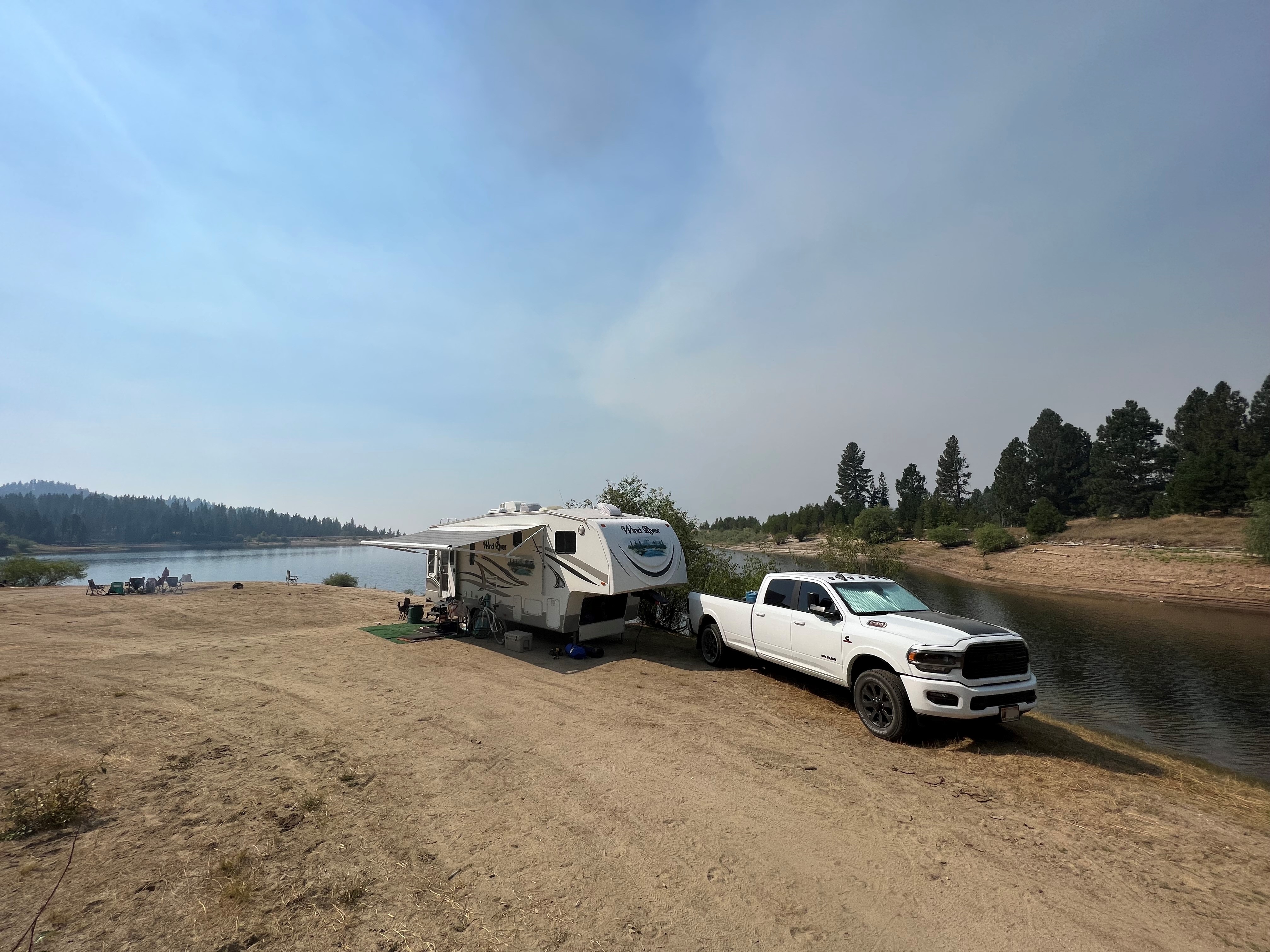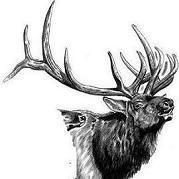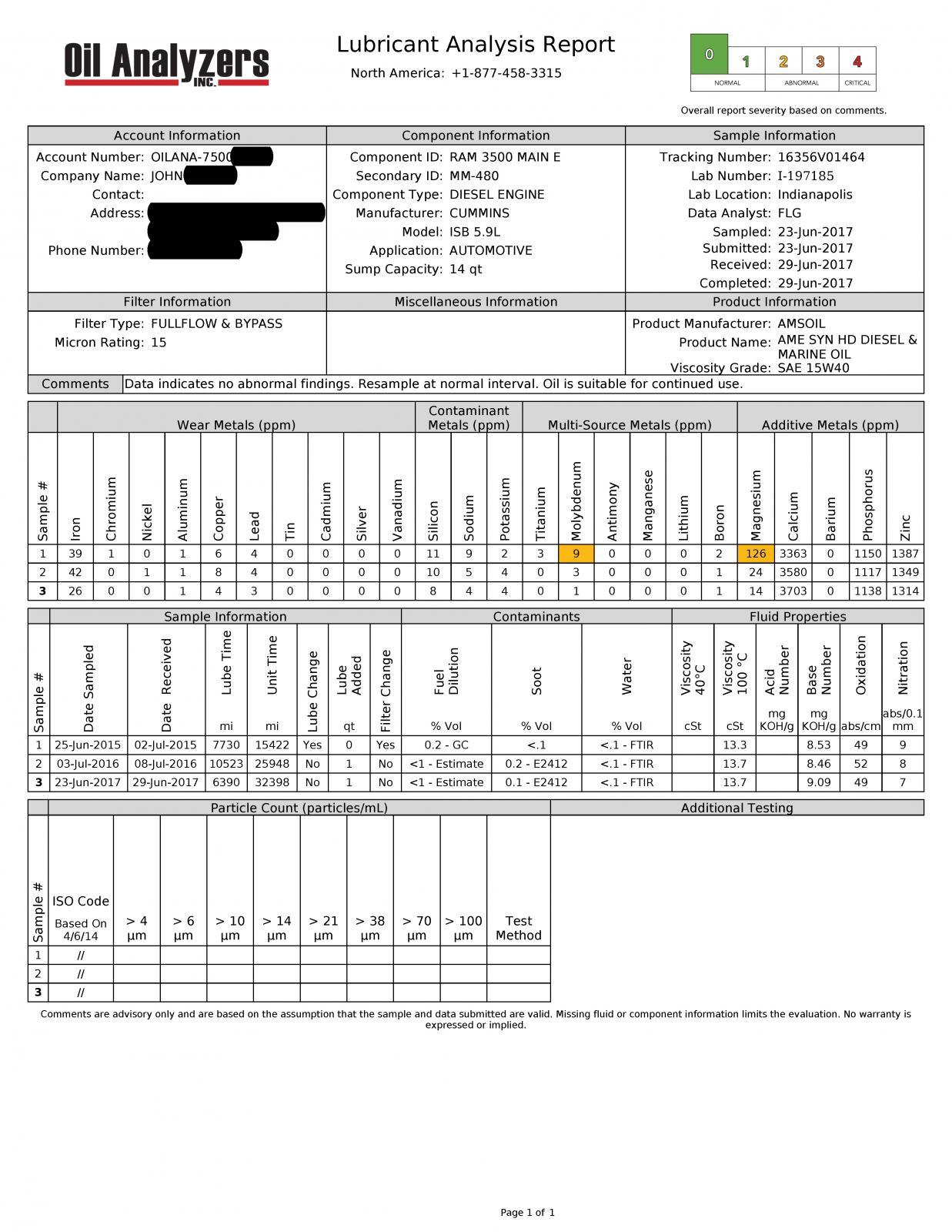
Everything posted by AH64ID
-
How can I Lower My Egt's
Maybe you have said it already, but what all have you done and how do you want to use it?
-
How can I Lower My Egt's
When you don't have the mechanical advantage of gearing the motor has to work harder to keep the tires rolling. This effect, combined with the reduced rpms of tall gearing makes for higher load at lower rpms and you run higher egts. Just a little example... lets assume it takes 400 lb/ft of tq to make the truck run 65 mph in OD. With 3.55's you're running around 1500 rpms. With this gearing the motor has to make 169lb/ft. With 4.10's you'd be running around 1730 rpms. With this gearing the motor has to make 141lb/ft. With 4.88's you'd be running around 2060 rpms. With this gearing the motor has to make 119lb/ft. The work required doesn't change, but the motor isn't working as hard with lower gearing.
-
Grossing 16-17k in the Northeast, should I expect more from truck?
I never ran the truck stock so I cannot comment on that. 10% while towing is 1 mpg, at most and lots of variables in there. That's where I saw the biggest gains. In cruise it was maybe .5 mpg at 16-17 mpg.
-
Grossing 16-17k in the Northeast, should I expect more from truck?
I cant say with the post as I haven't ran with the post on in over 100K miles. With the pre I saw maybe a 10% gain by adjusting it. The biggest thing I saw was better EGT's, less noise, and less haze. I was able to reduce the cruise pilot and advance the main cruise timing to get a little bit of a gain but it's not huge.
-
Grossing 16-17k in the Northeast, should I expect more from truck?
Yes, like everything!!! It looks daunting at first, but it gets better... with a dew dozen tune revisions
-
Gear swap
Best way to quiet down a 2nd gen is to get a 3rd gen The VP trucks are the noisiest Cummins ever put in a Dodge.
-
Grossing 16-17k in the Northeast, should I expect more from truck?
Cruise timing wont be effected by the cam too much, but spool timing is. Between my cam/turbo/pistons I am able to run a considerable amount more timing in the 35-55% load range than on trucks without those mods. An SSR will give you some additional UDC options, but there aren't any box tunes. I still think you should save for UDC pro and run SW3 until then... you're not looking at a huge mileage gain over SW3 anyhow.
-
Gear swap
They do have a place and a purpose, but if they are just for looks then I'm not interested. I like the 255/80R17 for the added axle clearance in deep snow. It's amazing what just a little bit will do to help.
-
Grossing 16-17k in the Northeast, should I expect more from truck?
Changing duration will change stuff in timing, if there is an applicable cell. The duration table has many unused cells, or cells that are blended. If you go to the 140mm3/160mpa cell and change it to 2500 you will see the timing at 100% load change. 9° is a fair amount of timing for a common rail. The delay from commanded injection to actual injection is very small on a CR since the fuel is already pressurized at the injector. There is also between 10-18° of timing on top of that for the pilot injection event, and the pilot means there is also minimal ignition delay once fuel is injected. If you leave duration where it is the fuel will be the same as SW3 since SW3 uses a stock duration map. I only mess with small parts of the duration table, and depending on the injectors and desired power I will either increase it or decrease it. My truck runs less duration than stock with more power. If you want more overall power than you have now you will need to mess with part of the duration table. The timing table in the calculator is a very rough starting point. It will likely have a decent about of haze in the mid section, but it does give you the idea. Be sure to set the rail pressure back to stock as that has a big effect on the calculator.
-
Gear swap
Correct, 3.73's are aftermarket only for 2nd gens.
-
Grossing 16-17k in the Northeast, should I expect more from truck?
In loose terms yes, however actual maps don't have the big areas of static timing/pressure in them like the "modified" sample does. Marco once said they are rough guides on how one could tune, but they are not what's in the box tunes. Here is a link to my timing calculator. https://smartyresource.com/forums/topic/369-udc-timing-calculator/ This is the last tune I ran before UDC Pro. My timing is a bit different now because I can modify the pilot too. Pink is the SW5 demo file, and blue is my timing.
-
Gear swap
If that's the size you currently run you aren't going to see much difference then. That's already an oversized tire and I can't think of anything that is taller without getting very heavy. A 315 is going to be about 130% the weight for a 4% reduction in rpm.
-
Gear swap
Tall and skinny is the best way to drop rpms without drastically increasing the unsprung weight. 285/75R17 would also be a decent size, but they will be a bit heavier than the 255 series tires. IMHO 315' wouldn't be a good choice, as they are heavier and wider, both of which will increase the power required to spin them.
-
Gear swap
It will take tens of thousands of miles, or more, to offset the cost for just a mpg gain even if you do the work yourself. If you were to go from 14 to 16 mpg the CPM would be reduced by less the 0.03/mile at 3.00/gal. If you did the gear swap for $1000 it would take 33K miles to cover the cost. In my research for swapping from 3.73 to 4.10, for towing purposes, it would cost closer to $3K to do the swap and that would take 100K miles to recoup the cost. Going from 16 to 18 mpg would would be a 0.02/mile savings and thus take 150% longer to pay off. I think a 2mpg gain is unrealistically high... basically it's not going to save you any money unless you plan to put 250K more miles on the truck. If you've never setup gears before, which I gather you haven't, I wouldn't do it yourself. Go with a taller and skinnier tire on your next set, it will reduce rpms without a large increase in rolling resistance/weight. A 255/85R16 would be a 5% reduction in rpms over a 265/75R16, which is just over 1/2 of the change you would get with a gear swap.
-
Grossing 16-17k in the Northeast, should I expect more from truck?
Yes it takes some time to get things dialed in. It took me about a year to get to where I was comfortable with tuning and the effects it was having on the truck. UDC is great, but some of the tables are mislabeled and if you don’t realize that tuning is difficult.
-
oil choices.
I still suspect that Cummins went back to the 190° thermostat due to oil temp issues. They also added an oil temp gauge the same year they dropped the thermostat back down. I’m going to be installing an oil temp gauge this spring so I’ll let you know what happens when I tow. That being said I’ll take a CI oil over any CJ oil. I haven’t decided what I’ll run on my next change, but the future is looking good for CK.
-
Grossing 16-17k in the Northeast, should I expect more from truck?
There will be some small gains to be made initially but most of my gains were made when I was able to reduce the pilot timing and rail pressure. The OEM pilot table is very advanced and based around the retarded main event. If you're doing the tuning yourself you may as well give it a go and see if you're happy with what you get. My timing calculator is still floating around the internet and should help you get your timing setup. Have you downloaded and played with UDC yet? I would use the demo version to see what all it takes before you buy a dongle.
-
Post turbo egts
Post turbo is the best spot for a turbo timer since post temps are generally higher than pre temps until the turbo is fully cooled down. I wait until my post turbo temps are under 350° to shut down on my water cooled turbo, around 300° is probably good for a non-water-cooled turbo. Welding a bung onto the downpipe is the easiest. You will want it as close to the turbo as possible. There is more to in that just a 200° delta. Post can be higher or lower than pre, and it can also be the same or up to 300°+ different. On my truck the pre-post difference is pretty close to 10° per psi of boost, so at 28 psi I show about a 280° delta. On a heat soaked turbo the post temps can remain higher than the pre-temps for a descent period of time in the right driving conditions. Post can be a great reference if you understand what it's telling you. I only use my post for shutdown temps, and at lower rpms the post is a better indication of exhaust/turbo heat soak.
-
oil choices.
Its from several conversations I've had with Amsoil, as well as other readings. Additive's are very similar, but the high temperature performance of CK is supposed to be slightly better.
-
Grossing 16-17k in the Northeast, should I expect more from truck?
Smarty Jr UDC uses the stock rail pressure map, which is the main reason I went to a S-06 over the Jr.... then came the Touch and UDC Pro. UDC Pro is similar to EFI Live. IMHO UDC Pro is better and it has more tables to edit. It also means a touch is needed. Yes it's worth it!!! My power has been the same for all 3 tuners but the S-06 tune was better than the Jr, and the UDC Touch is a HUGE step over the S-06. All UDC tunes are better than the box tunes. SSR sounds good on paper, it stops there.. DON'T DO IT! Since it's not my money... sell the S-JR and the Edge. Get a Touch or MM3(won't have box tunes) and get UDC Pro.
-
oil choices.
Mobil. The delvac he linked in the 1st post appears to be a new-production CI oil. Yeah I was wondering that too. Is it marketing for a niche market? Or is it better? I'd guess they gets lots of requests for a CI oil.
-
oil choices.
I've never done a VOA, but I can't imagine why they wouldn't. http://www.oaitesting.com/ It is a division of Amsoil, but they don't have anything to do with Amsoil on their reports. This is what their reports look like.
-
oil choices.
The only good CI oil for the last few years has been Amsoil but it's a little more money than Delvac. At least for Amsoil the additive package on the CK oils is better than CI, not by a lot, but better. It's good to see that oil out there. I'd like to see the UOA's when you get them done. Speaking of UOA's... have you tried OAI Testing? I've had nothing but poor performance out of blackstones "consultants" and blackstone charges more to do a report with TBN. OAI was recommended to me by the local Cummins center.
-
oil choices.
Since my dad bought a '17 that won't be "modified" anytime soon I have been researching CJ vs CK vs CI oils lately. Aside from TBN CK oil is better than CI oil, and both put CJ oil to shame.. but we already knew CJ was junk oil. CJ was a stop gap oil for DPF's and the technology/time weren't there when it was developed to make it what it should have been. CK oil's appear to handle sheer and high temp situations slightly better than CI, but CI will last longer for extended intervals. The performance of the two is very similar and, unlike when CJ came out, people seem happy with the new standard. I'm even considering switching to the new CK Amsoil DME from the CI AME I run now. I've never had a low TBN issue and I do enough high temp/high load towing that I wouldn't mind a little more protection. So that being said... that Mobil MX F2 looks like good oil! It's got great high temp characteristics and decent low temp viscosity for a dino oil. It' won't deal with soot quite as well as a CK oil, but that shouldn't be an issue on your 08 and even then CI does very well with soot. I wonder if they just started making CI again?
-
Well the Order is in
I hope to do some towing with the Aisin in the mountains this summer. I've never heard a bad thing about them and they are nothing like the 47/48 or even 68. I expect it to do as well as, or better, than my NV5600. It just sucks how much torque you give up with the G56.






